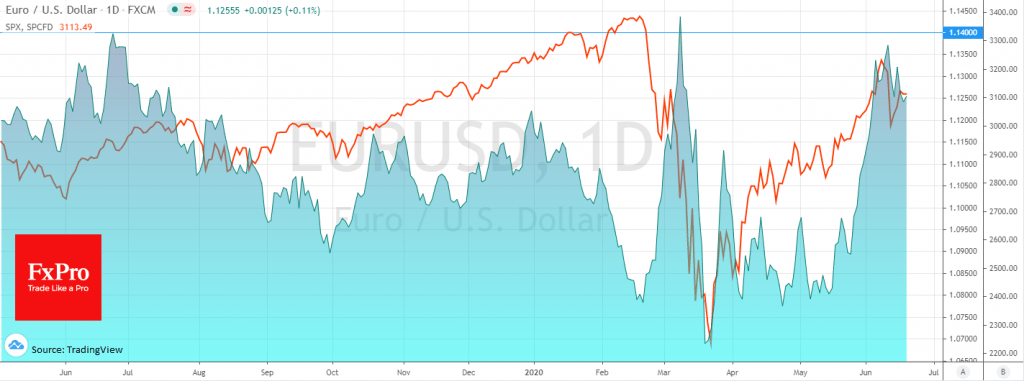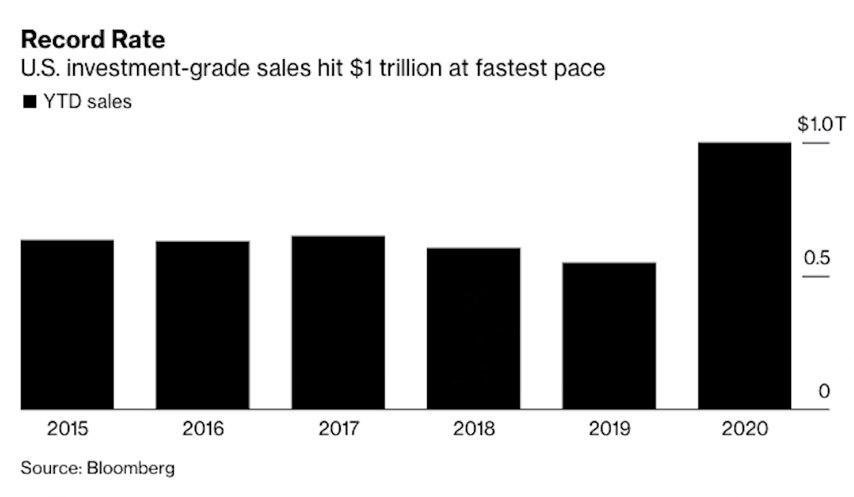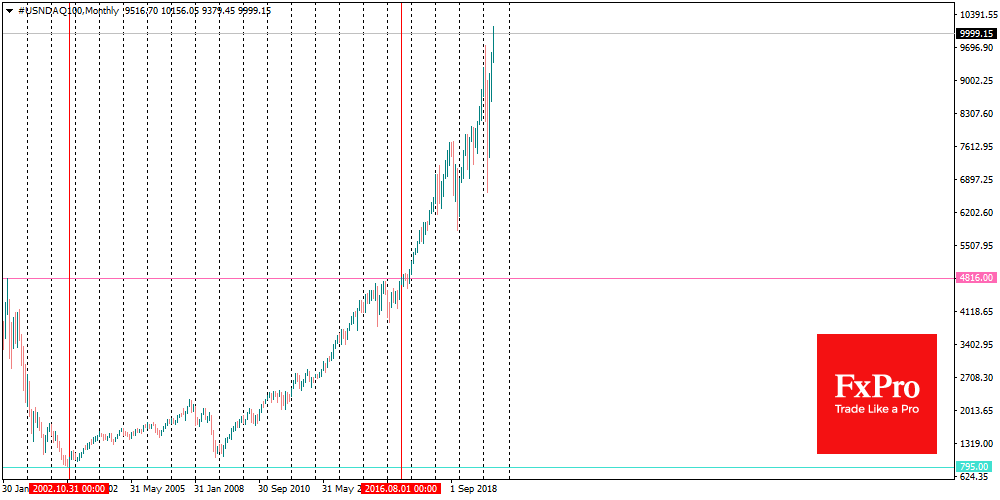The last phase of Bull markets: professionals sell to retail investors
June 18, 2020 @ 11:12 +03:00
Despite some increase in Chinese indices on Thursday, there are still more signs of a cautious approach in global markets. First of all, this can be seen in the dynamics of key currency pairs.
The American dollar has been rising against the euro and the pound since last week. Sales of the Australian dollar are increasing from ever-lower levels. At the same time, the American currency gives up positions against the yen. This is a clear signal of the prevalence of cautious sentiment among large market players.

For about a year, the decline of EURUSD from 1.1400 precedes the strengthening of pressure in the world markets. In July-August 2019 it was a sluggish sideways price trend, which suddenly ended with a 10% decline in S&P 500 in 5 days. In March, the situation developed much more dynamically: a massive sale of EURUSD from 1.1400 was accompanied by a 25% collapse of the S&P 500 in the next ten days.
Of course, one cannot deny the positive impact of central bank incentives on financial markets, as well as on several macroeconomic surprises. At the same time, there is a feeling that we can now observe the final stage of the bull market when large knowledgeable investors sell their assets to many small private investors.
Brokerage companies and exchanges continue to note a jump in client activity. In some cases, a 4-fold rise in the amount of new open accounts was reported in March and April. The stock exchanges also confirm the growth of the number of transactions from individuals.

It’s worth looking at this situation with fear. Studies show that such democratization of markets is a dangerous situation. Such bullish growth can continue for years, but only if supported by institutional investors’ optimism as well. But now, business is playing the other side.
Analysts of investment companies almost unanimously consider many sectors of the market to be overvalued. At the same time, it continues to attract money from the markets, placing record volumes of stocks and bonds in recent months.
If we simplify it a lot, we are now witnessing a situation where more informed market participants sell assets to less informed ones. Retail investors act based on the 11-year bull market run and massive central banks asset purchases. This gives the impression that the stocks can only grow. But this is not the case.
It is hardly reasonable to buy a share of any company on the basis that even in case of share drop, it will grow in the future sooner or later. After all, companies will go bankrupt, and we are only at the beginning of this record-breaking wave of defaults.

The same can be said for the whole sectors. Nasdaq, which fought for the 10,000 level again yesterday, tells a very instructive story. In March 2000, it “unexpectedly” peaked at 4816 and reached it’s bottom 31 months later, losing 83% during this time. It took 16 years to overcome the peak of 2000. Even now, private stock buyers seem to underestimate the possibility of becoming very long-term investors extremely.
The FxPro Analyst Team







